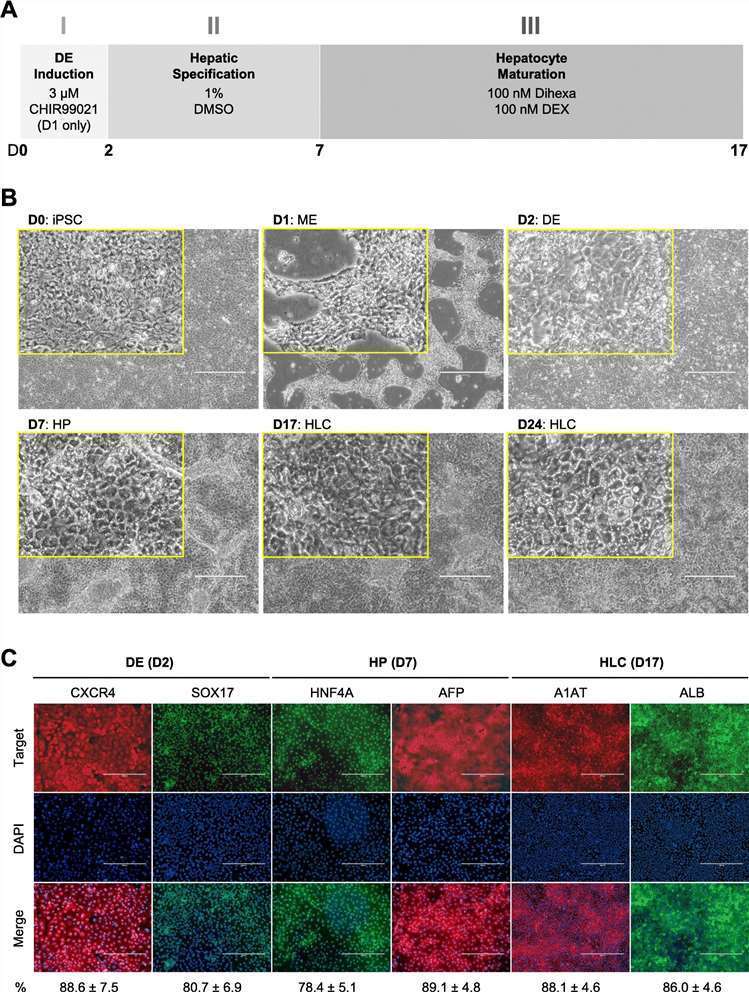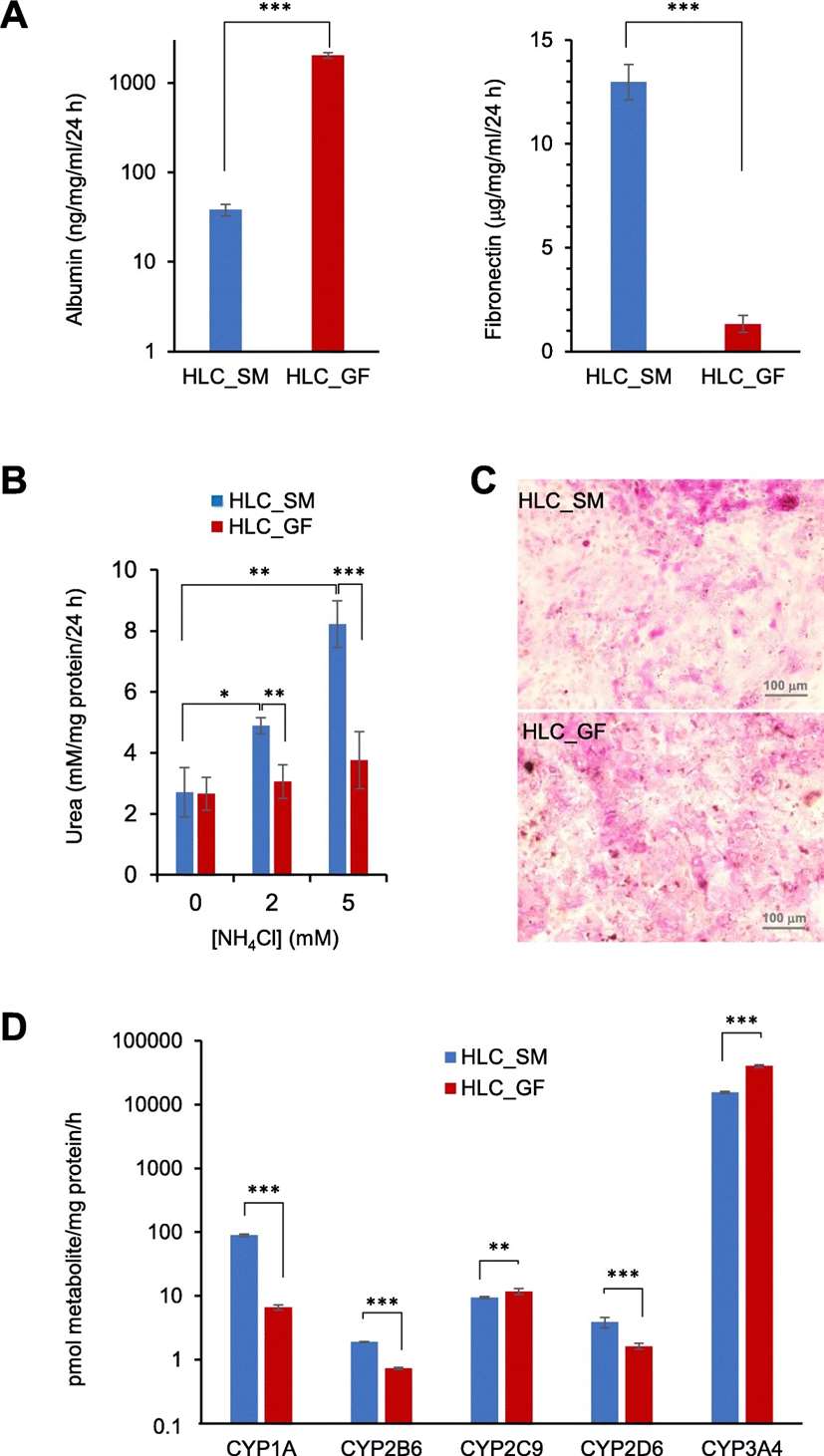Featured Products
Our Promise to You
Guaranteed product quality, expert customer support

QualiStem® IPS Cell Hepatocyte Differentiation Kit
- Specification
- Recommended Products
- Background
- Scientific Data
- Q & A
- Customer Review
Studies in the field of hepatology is limited by the incomplete recapitulation of all major aspects of human liver metabolism in most established models. This restricts our ability to study the molecular mechanisms underlying liver diseases, and leads to insufficient toxicological assessment during drug development, resulting in tremendous unnecessary costs for the pharma industry.
The IPS Cell Hepatocyte Differentiation Kit provides a valuable tool for generating hepatocyte-like cells (HLCs) from induced pluripotent stem cells (iPSCs). These HLCs can be used in a variety of applications, including drug metabolism and toxicity studies, disease modeling, and regenerative medicine research.
One important application of the IPS Cell Hepatocyte Differentiation Kit is in drug metabolism and toxicity testing. Hepatocytes are the primary site of drug metabolism in the body, so having a reliable source of hepatocyte-like cells for drug screening studies can help researchers better understand how potential drug candidates will be metabolized and whether they have any potential toxic effects on the liver.
The HLCs generated using the IPS Cell Hepatocyte Differentiation Kit can also be used to model liver diseases, such as hepatitis or fatty liver disease. By studying these diseases in a controlled in vitro environment, researchers can gain valuable insights into the underlying mechanisms of these diseases and test potential therapeutic interventions.
Additionally, the IPS Cell Hepatocyte Differentiation Kit can be used in regenerative medicine research, as it provides a platform for generating hepatocytes that could potentially be used in cell-based therapies for liver disease. By generating patient-specific hepatocytes from iPSCs, researchers can develop personalized treatment strategies for individuals with liver disease.
Differentiation of iPSCs to HLCs Driven by Small Molecules (SMs)
HLCs were differentiated from iPSCs using a protocol that only involves SMs. The protocol comprises of three phases (Fig. 1a). In the first phase, the cells were treated for 24 h with 3 μM CHIR99021, a potent and highly selective GSK-3β inhibitor, followed by 24 h of non-directed differentiation. In the second phase, the cells were treated with 1% DMSO for 5 days to specify a hepatic fate. In the final phase, cells were further treated for 10 days with dihexa, a potent and stable HGF receptor agonist, in combination with dexamethasone, a glucocorticoid mimetic, for hepatocyte maturation.
 Fig. 1. a Schematic diagram showing the three-phase differentiation process. b Representative images showing sequential morphological changes at each stage of the differentiation. c Representative immunocytochemistry images demonstrating the expression of key markers at each stage of the differentiation (Gao, X. et al., 2020). ME, mesendoderm; DE, definitive endoderm; HP, hepatic progenitor; HLC, hepatocyte-like cell.
Fig. 1. a Schematic diagram showing the three-phase differentiation process. b Representative images showing sequential morphological changes at each stage of the differentiation. c Representative immunocytochemistry images demonstrating the expression of key markers at each stage of the differentiation (Gao, X. et al., 2020). ME, mesendoderm; DE, definitive endoderm; HP, hepatic progenitor; HLC, hepatocyte-like cell.
Hepatic Functions of HLCs Derived by SMs
One of the key functions of hepatocytes is the production of serum proteins. ELISA results showed that HLC_SM secreted both ALB and fibronectin into the medium at levels comparable to HLC_GF, with ALB higher for HLC_GF but fibronectin higher for HLC_SM (Fig. 2a). Ureogenic capacity is another indicator of functional liver cell. HLC_SM showed increased synthesis and release of urea into the culture medium upon incubation with NH4Cl, with levels significantly higher than HLC_GF (Fig. 2b). Another important function of hepatocytes is glycogen storage. PAS staining of HLC_SM displayed extensive cytoplasmic staining (pink to purple) indicative of glycogen storage, at levels similar to those in HLC_GF (Fig. 2c). Hepatocytes are capable of clearing xenobiotics via metabolism through cytochrome P450 (CYP) isoenzymes. Therefore, CYP activity is the most critical attribute of hepatocytes for toxicological applications. We used LC/MS to assess the basal activity of major CYP isoenzymes in HLC_SM. The result showed that HLC_SM had activity levels on par with HLC_GF for CYP1A, CYP2B6, CYP2C9, CYP2D6, and CYP3A (Fig. 2d).
 Fig. 2. Functional analysis of hepatocyte-like cells derived using the small molecule-based protocol (HLC_SM) in comparison to those derived using the growth factor-based protocol (HLC_GF) (Gao, X. et al., 2020).
Fig. 2. Functional analysis of hepatocyte-like cells derived using the small molecule-based protocol (HLC_SM) in comparison to those derived using the growth factor-based protocol (HLC_GF) (Gao, X. et al., 2020).
The IPS Cell Hepatocyte Differentiation Kit contains all the necessary components to efficiently differentiate iPSCs into functional hepatocytes. The process typically involves seeding iPSCs into a culture plate and following a specific protocol that guides the cells through the different stages of hepatic differentiation. The end result is a population of hepatocyte-like cells that exhibit key hepatic functions, such as albumin production and cytochrome P450 activity.
Average Rating: 5.0 | 1 Scientist has reviewed this product
Highly recommend!
I recently purchased the iPSC hepatocyte differentiation kit and I have been extremely impressed with the results. The kit was easy to use and the instructions were clear and concise. The hepatocytes generated from this kit showed excellent functionality and resembled primary hepatocytes in both morphology and functionality.
26 Aug 2023
Ease of use
After sales services
Value for money
Customer Support & Price Inquiry

